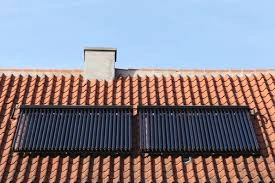Solar Water Heaters vs. Solar Panels
Heating Water with Solar Energy: Direct or Indirect?
When we think of using the sun's energy to heat water, we usually picture solar water heaters: systems with tubes running across the roof that absorb sunlight to heat water. This heated water is stored in a boiler and, if needed, can be heated up more for household use in kitchens and bathrooms.
However, an increasing number of people are now heating water indirectly using electricity generated by solar panels. At first glance, this might seem inefficient, as it introduces an extra conversion step—turning sunlight into electricity and then using that electricity to produce heat. The general rule is: the more conversions, the greater the energy loss. Traditional solar water heaters (solar thermal systems) involve only one conversion—directly from sunlight to heat—so wouldn't they be the better option?
Pipes vs. Cables
One major drawback of solar thermal systems is the complexity and cost of installation. Running pipes with heat-transfer liquid to and from the roof isn’t always straightforward, and improper installation could lead to leaks.
This is why some companies advocate for using standard PV panels instead. The idea is simple: generate electricity with PV panels and use it to heat water via an electric boiler or heat pump. Instead of pipes filled with liquid, only electrical cables are needed. Additionally, by freeing up roof space otherwise used for solar collectors, you can install more PV panels. The simplicity of these types of installations has contributed to the growing preference for PV systems over solar thermal systems.
Data from the Dutch Central Bureau of Statistics (CBS) confirms this trend. Over the past decade, the total surface area of installed solar collectors in the Netherlands has remained relatively stable, whereas the capacity of installed PV systems has skyrocketed. This indicates a clear shift in preference towards PV-based water heating.

The total amount of installed solar thermal systems has remained relatively flat.. (source: CBS via HollandSolar)

... whereas the total amount of PV has skyrocketed (Source: CBS via HollandSolar)
Conclusion
There are many ways to utilize solar energy at home. While traditional solar water heaters remain an effective solution, PV-based heating offers flexibility and ease of installation.
For the record: Zonnefabriek doesn't install solar thermal systems, but we do offer heat pumps and smart energy management solutions. If you're interested, feel free to reach out!
Select a category
Find your question
Enter a keyword to search through our FAQ
Click here for an overview of all terms used, with a brief explanation of each term.
List of terms

